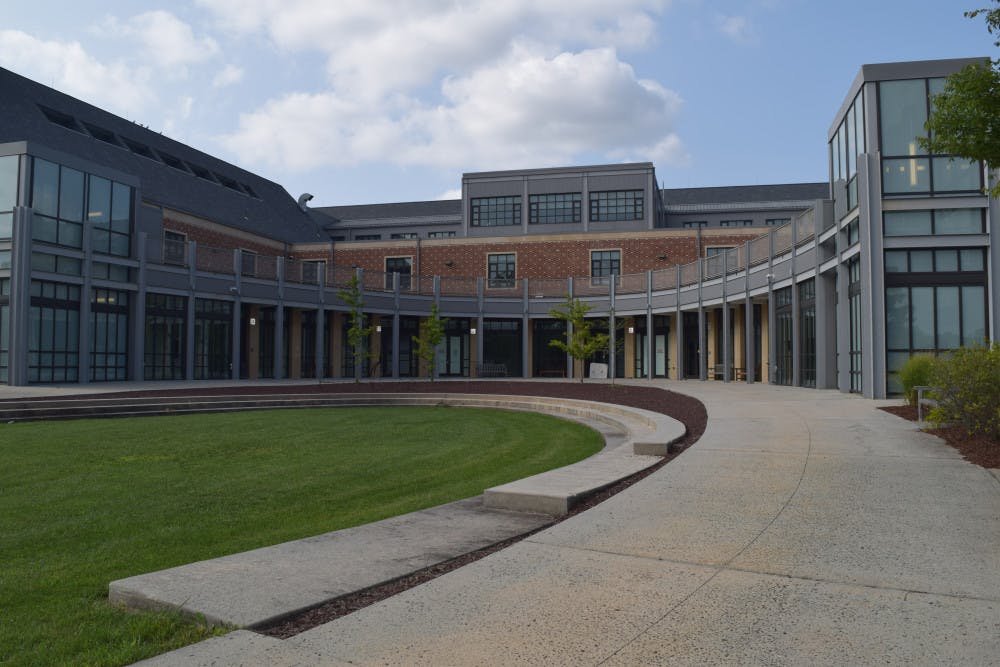By Ian Krietzberg and Esther Morales
Arts & Entertainment Editor and Reviews Editor
More than three months ago, the killing of an innocent and unarmed Black man by a police officer was caught on tape. Its release to the internet prompted a wave of protests, both in the streets and on social media, that rocked the entire world. That wave is showing no signs of stopping.
Since then, the call for social justice reform has echoed louder than ever before, and this call is resonating everywhere. It is not surprising that echoes of this injustice have reached The Artivism Project (TAP) at the College.
The project began back in 2014 when its creator — Colleen Sears, current Chair of the Music Department — discovered a video called The Katrina Ballads. The video compiled a series of primary source media, from images and videos of the destruction caused by Hurricane Katrina to clips of the president speaking, and put it to original music. Its effort is to give people a different way to recall and commemorate the tragedy.
This marked the beginning of The Artivism Project, as watching this relayed an important point to Sears: utilizing art as the catalyst for an honest discussion about difficult topics simultaneously personalizes and depersonalizes the topic, creating a level footing for imperative dialogue.
It was that piece of art — The Katrina Ballads — that served as The Artivism Project’s first step. Dr. Sears fostered interdisciplinary collaboration both in and out of the classroom that allowed students at the College to examine some of the stark racial inequities that Katrina brought to light. Professional musicians were brought in to perform the ballads for students at the College in addition to local high school students, who were brought into Mayo Concert Hall to witness the performances.
Six years later, the Artivism Project is a collection of faculty members across campus in different schools and departments. This is the first level of interdisciplinary collaboration within the project, and it occurs in the classroom. From there, student organizations are brought in, collaborations between groups of students and departments are fostered and art is created.
“It’s been a fantastic group to work with throughout the years. We’ve added new people as projects evolve, and it’s great to see it growing,” Sears said.
This year the focal point of the project is a poem titled “Weather” by Claudia Rankine, which aptly addresses the current state of the nation in the grips of a global pandemic and wracked with pain from potent issues of racial injustice.
The initiative plans to explore and connect the themes of the poem through a wide range of artistic collaborations, including music performances and compositions, art gallery exhibitions, and fall course offerings.
Thus far, the project has received an overwhelmingly positive response from faculty and students. As it spreads to classrooms, many professors are discussing their range of plans for fall coursework and exploring the different ways in which they can integrate the project into the classroom. Thirty-five faculty and staff are currently on board and five student organizations have also opted to get involved.

“I’m so inspired by my colleagues and the students that participate in this, and the educators that are interested in trying something new with their students,” Sears said.
As one of the many collaborations to begin stemming from the project, Sears said that she plans to have her own students create soundscapes based on lines from the poem, creating music that will be aired periodically throughout the semester by WTSR. Graphic design students will then interpret and transform the soundscapes into visual designs, under the tutelage of professor Diane Zatz.
“It creates an atmosphere where we’re motivated by doing this important social justice work, but we’re doing it together in a creative way,” she said.
In the spirit of the College’s untraditional virtual semester, Sears said that part of the project is uncertainty — not knowing how it will grow and evolve over time. Looking into the full scope of this project, she hopes to have the opportunity to commission a composer, as the project has previously done in the past.
Also in the works under the School of Arts and Communication is a TAP website that will both act as an archive of past projects and share the outcomes of the current project. The initiative hopes to expand beyond the College to K-12 educators and surrounding school districts, to serve as inspiration for teachers to begin having similar dialogues with their students.
“We want to be mindful that this is not a one-off thing right. This type of work is important to engage in the long term,” Dr. Sears said.
One of the main goals of this project is to create a space for vulnerability to discuss challenging social justice issues that affect people’s day-to-day lives. TAP faces the fear and pain that surrounds social justice dialogue and tackles issues through various artistic mediums that allow messages of inequity, racial injustice, and change to be expressed more easily.
“My hope is that this provides a way for us to talk about these issues in a way that doesn’t shut down the conversation, but provides a little bit of a safe space in which to open the conversation,” Sears said.







